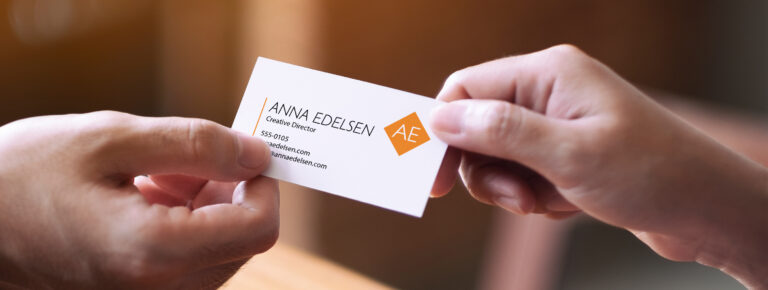
5 Reliable Tips to Prepare for Employee Reviews
Estimated reading time: 6 minutes
Preparation for conducting employee reviews that improve performance
Planning ahead for employee reviews helps you present comprehensive feedback that accurately reflects the employee’s performance. Not only must you have clear standards and criteria in mind before they begin, but you must also communicate that information with the person being reviewed.
The overall goal of employee reviews should be to help employees improve rather than to scold or admonish them. Focusing on opportunities for improvement can help increase employee engagement, which is always good for business. In this article you’ll find 5 time-tested tips you can rely on to help guide your preparation with that goal in mind.
More articles you might like:
- 5 Steps to Hiring the Best Talent
- 5 Elements of an Effective Professional Development Plan
- How to Put Together a Wellness Gift for Employees
1) Align KPIs for impact, success, and progress
If you want your employee reviews to improve performance, it’s vital that both managers and employees are on the same page. That is to say, both you and the person being reviewed have a clear understanding of what is expected and how to measure success.
First, you must determine what the criteria are for good performance. In other words, specify the key performance indicators (KPIs) that you will use to measure impact, define success, and determine progress towards goals.
Have your KPIs well-established ahead of employee reviews so that it’s easier for employees to understand and digest your feedback. This is important because once you have aligned KPIs for impact, success, and progress it will be easier to determine where to go next.

2) Gather and organize data and examples
Ideally, you would have been collecting data from a variety of sources all year long. Then it would just be a matter of organizing the information before employee review season. However, if that is not the case, simply start gathering as soon as you’ve determined KPIs.
Data and specific examples of employee performance is extremely important because employee reviews should be objective. It should be easy to show concrete examples of when something missed the mark or was successful. Additionally, hard copies of performance data make the information tangible and helps create context.
Creating context for data is key because employees place a high value on fairness in reviews. For this reason, pull from a variety of sources. For example, notes from 1-on-1 meetings, examples of recognition, talent review ratings, previous performance reviews, hiring documents, and 360 feedback as well as strengths and work style tests.
3) Carefully consider meeting time and place
Start with choosing the best time of year to hold employee reviews. Most companies choose to hold them once or twice per year. A typical cadence is often one review at the end of the year during January or December and one mid year in June.
Plan for employee reviews in January to start during the second week. This allows everyone to get back into the swing of things after the holidays. In December, hold them as early in the month as possible. This will help you conclude reviews before the end of the fiscal year as well as catch everyone before holiday events and vacations begin. Likewise, hold June reviews early in the month to avoid summer vacations.
Whichever review cadence you choose, the next step is to decide how much time you will allocate to each review. An hour is typical, less than 30 minutes is probably not enough time to be thorough. Then choose a location that limits outside distractions, is visually pleasing but not over stimulating, and has a comfortable place to sit with table space to review documents.
4) Tailor notes and an agenda to each review
An employee review should be a meaningful conversation about performance for both parties— not a lecture. As the person conducting the review, it is your responsibility to engage employees in the review process.
To do that, first create and share individual agendas ahead of the review that includes time, place, and key talking points. Encourage the employee to not only review the agenda, but also add any topics they’d like to discuss.
Next, use the data and examples you’ve collected to tailor the key talking points to each employee. Finally, give each employee enough advance notice so that they can thoughtfully consider the topics for review.
5) Set expectations for employee reviews
According to a Forbes article, hearing nothing from their bosses until reviews roll around causes the most dread among employees. Furthermore, the majority of employees (82%) appreciate feedback whether positive or negative and 65% want more. Luckily, setting expectations before and during employee reviews opens the door for ongoing and reciprocal feedback.
When you’re sending out agendas, touch base with each employee and let them know their role in the review process. Tell them what to bring and what information will be referenced. This is also a chance for you to frame reviews as a coaching opportunity to help bring out their best.
During the meeting give effective feedback by focusing on areas where the employee can improve. Use their professional development plan and the company’s goals to identify these. Bring resources such as training programs and online classes so that you can give positive steps for improvement.
Moreover, providing direct “next steps” for employees will drive ongoing feedback as those steps are completed. Above all, coming prepared with resources for improvement clearly sets expectations for their success and having your support.
Preparation for employee reviews improves performance
In summary, we know that employees thrive when given constructive feedback. Employee reviews are the perfect time and place to engage with individuals to help them improve performance.
As you prepare for conducting employee reviews, there are 5 things you can do to create a more meaningful experience. First, clearly define the KPIs you will use to measure impact, define success, and determine progress towards goals.
Second, gather data from a variety of sources to provide each employee with concrete examples of when something missed the mark or was successful. Third, avoid peak holiday and vacation times when planning employee reviews, allocate no less than 30 minutes per meeting, and be mindful of distracting locations.
Fourth, tailor each review to the employee and encourage them to contribute topics they’d like to discuss. Fifth, set expectations for success and clearly communicate roles.
Is there something else you do when preparing for employee reviews? Join the conversation on LinkedIn and Facebook.



